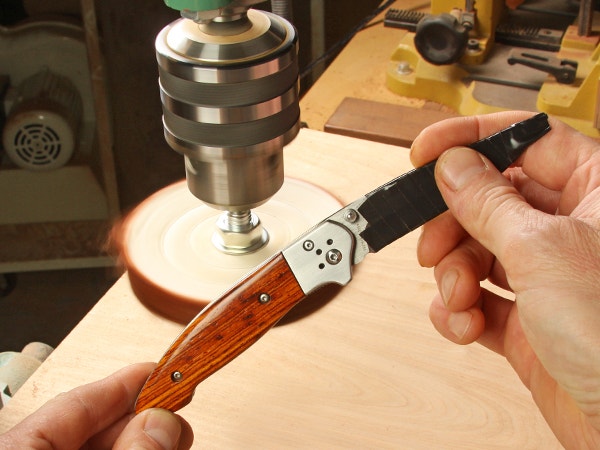Best Woods and Finishes for Making Knife Handles?
If I'm going to make a knife what finishes and woods would you suggest? - Joe Reed
Tim Inman: It all depends. Will the knives be for show only? Will they be for outdoor use? Will they be for kitchen use? Will an unappreciative owner run them through the dishwasher? It depends. For beauty and feel, traditional exotics like rosewood and its ilk would be my first choice. These woods are naturally hard, polish beautifully and are oily enough they really don't need anything for finish other than maybe a little oil or wax from time to time. Hard-used kitchen knives have been made with unfinished hickory handles for generations. Not pretty, but durable as can be — and tolerant of abuse. Modern woods, which have been impregnated with epoxy, are available, or you can make up your own if you have a vacuum system handy. These materials are durable and tolerate wet abuse better. As for finishes, the film formers like polyurethane and lacquers and varnishes would be my very last choice. They will ultimately fail and flake off. Oils and waxes would be my best recommendation. They are fugitive but can be replaced easily.
Chris Marshall: We've owned a set of general-purpose kitchen and steak knives that have gotten regular use for 25 years. They have unfinished walnut handles that have stood the test of time very well with no special care - other than keeping them out of the dishwasher and dry between uses. I'd go with a hardwood for handle material, but within that context, your wood species options are wide open.
Keep the inspiration coming!
Subscribe to our newsletter for more woodworking tips and tricks





